
Cyrus Hall McCormick was an American inventor and businessman who founded the McCormick Harvesting Machine Company, which later became part of the International Harvester Company in 1902. Originally from the Blue Ridge Mountains of Virginia, he and many members of the McCormick family became prominent residents of Chicago. McCormick has been simplistically credited as the single inventor of the mechanical reaper.
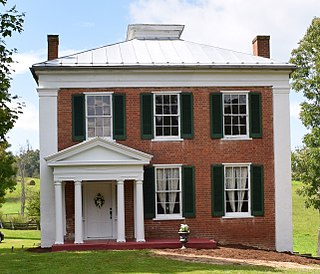
Rockbridge County is a county in the Shenandoah Valley on the western edge of the Commonwealth of Virginia. As of the 2020 census, the population was 22,650. Its county seat is the city of Lexington. Rockbridge County completely surrounds the independent cities of Buena Vista and Lexington. The Bureau of Economic Analysis combines the independent cities of Buena Vista and Lexington with Rockbridge County for statistical purposes.

Lexington is an independent city in Shenandoah Valley of Virginia, United States. At the 2020 census, the population was 7,320. It is the county seat of Rockbridge County, although the two are separate jurisdictions, and is combined with it for statistical purposes by the Bureau of Economic Analysis. Lexington is about 57 miles (92 km) east of the West Virginia border and is about 50 miles (80 km) north of Roanoke, Virginia. First settled in 1778, Lexington is best known as the home of the Virginia Military Institute and Washington and Lee University.

A reaper is a farm implement or person that reaps crops at harvest when they are ripe. Usually the crop involved is a cereal grass. The first documented reaping machines were Gallic reapers that were used in Roman times in what would become modern-day France. The Gallic reaper involved a comb which collected the heads, with an operator knocking the grain into a box for later threshing.

Raphine is an unincorporated community in Rockbridge County in the Shenandoah Valley in the U.S. state of Virginia.

The Leander McCormick Observatory is one of the astronomical observatories operated by the Department of Astronomy of the University of Virginia, and is situated just outside Charlottesville, Virginia (US) in Albemarle County on the summit of Mount Jefferson. It is named for Leander J. McCormick (1819–1900), who provided the funds for the telescope and observatory.
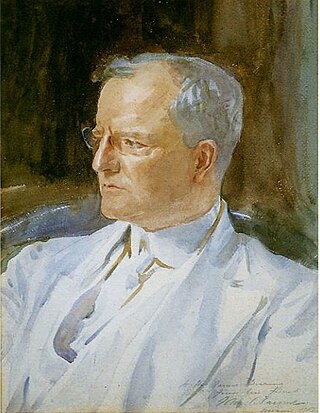
James Deering was an American executive in the management of his family's Deering Harvester Company and later International Harvester, as well as a socialite and an antiquities collector. He built his landmark Vizcaya estate, where he was an early 20th-century resident on Biscayne Bay in the present day Coconut Grove district of Miami, Florida. Begun in 1910, with architecture and gardens in a Mediterranean Revival style, Vizcaya was his passionate endeavor with artist Paul Chalfin, and his winter home from 1916 to his death in 1925.

Leander James McCormick was an American inventor, manufacturer, philanthropist, and businessman and a member of the McCormick family of Chicago and Virginia. Along with his elder brothers Cyrus and William, he is regarded as one of the fathers of modern agriculture due to his part in the development of the McCormick Reaper and what became the International Harvester Company. He also owned and developed vast amounts of real estate in downtown Chicago and Lake Forest, Illinois. In 1885, he donated one of the world's largest telescopes to the University of Virginia.

Robert Hall McCormick was an American inventor who invented numerous devices including a version of the reaper which his eldest son Cyrus McCormick patented in 1834 and became the foundation of the International Harvester Company. Although he lived his life in rural Virginia, he was patriarch of the McCormick family that became influential throughout the world, especially in large cities such as Chicago, Washington, D.C., and New York City.

William Sanderson McCormick was an American businessman who developed the company that became the major producer of agricultural equipment in the 19th century. The business became the International Harvester corporation after his death. Although he died relatively young with most of the fame going to his brothers, his extended McCormick family continued to be influential in the politics and business of Chicago.

Robert Sanderson McCormick was an American diplomat. Born in rural Virginia, he was part of the extended McCormick family that became influential in Chicago.
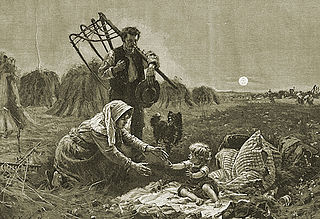
A grain cradle or cradle, is a modification to a standard scythe to keep the cut grain stems aligned. The cradle scythe has an additional arrangement of fingers attached to the snaith to catch the cut grain so that it can be cleanly laid down in a row with the grain heads aligned for collection and efficient threshing.
Patrick Bell was a Church of Scotland minister and inventor.
The McCormick family of Chicago and Virginia is an American family of Scottish and Scotch-Irish descent that attained prominence and fortune starting with the invention of the McCormick Reaper, a machine that revolutionized agriculture and established the modern grain trade by beginning the mechanization of the harvesting of grain. Through the McCormick Harvesting Machine Company and later, the International Harvester Company and other investments, the McCormicks became one of the wealthiest families in America. The name became ubiquitous in agriculture starting in the 19th century and the press dubbed the McCormicks the "Reaper Kings". Later generations expanded into media and publishing, finance, and real estate. Various family members were well known as civic leaders. The family is Presbyterian.

Old Providence Stone Church is a historic church in Spottswood, Virginia in Augusta County, Virginia.
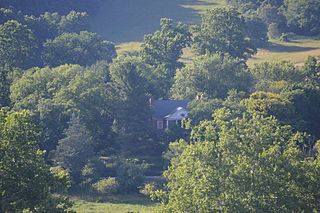
Hickory Hill is a historic estate in Rockbridge County, Virginia.
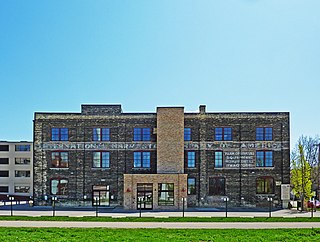
The McCormick–International Harvester Company Branch House was built in 1898 in Madison, Wisconsin as a distribution center for farm implements of the McCormick Harvesting Machine Company. After McCormick merged into the International Harvester Company in 1902, the building was expanded and served the same function for the new company. In 2010 it was added to the National Register of Historic Places.

William Wallace Marsh was a Canadian American inventor and businessman who co-founded Marsh, Steward & Company with his brother Charles. Born in Ontario, Canada, Marsh developed an early harvester prototype on the family farm in DeKalb County, Illinois, United States. With help from businessman Lewis Steward, Marsh, Steward & Company became an early leader in harvester production. The company later merged with others to form International Harvester. Marsh lived in Sycamore, Illinois from 1873 until his death, serving as a longtime alderman.

The Conrad Rice Mill is an independently owned and operated rice mill located in New Iberia, Louisiana, and produces the Konriko brand of rice varieties. Established in 1912, it is the oldest independently owned rice mill in the United States still in operation.






















